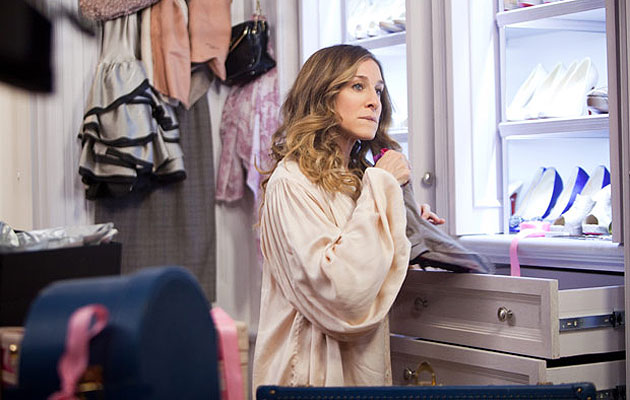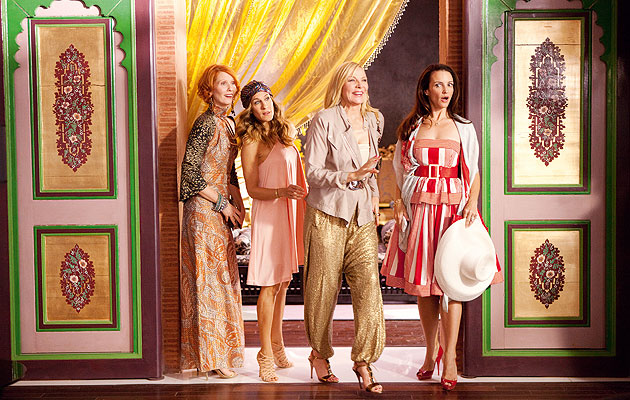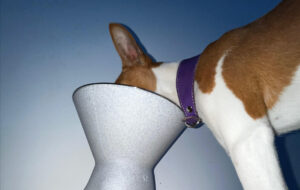|
(images: Warner Brothers/Craig Blankenhorn) |
||
|
This is no chick flick – it’s a text on the state of the contemporary city. Sam Jacob slips on some Manolos If it wasn’t a blockbuster franchise strung out through six series and (now) two big-screen versions, Sex and the City would exist as an obscure academic thesis written in the boring bit of an architecture school where there’s nothing much to look at. Its main argument is that sex, or to be more explicit desire, in late capitalist culture has consumed the very idea of the city. Manhattan is the laboratory here: the apogee of 20th-century urbanism has transformed into a self-consuming anti-urban condition. Oh, and shoes. It’s also about shoes. Sex and the City 2 is apparently aware of its double life as an urban design thesis. It starts with a history lesson. We’re floating though clouds: “A long time ago,” our old friend Carrie tells us, “there was an island, some Dutch, some Indians and some beads.” We look down at Manhattan island and see it wipe from a virgin forest to the contemporary city, then to a Swarovski-ised crystal grid. It gets to the point with admirable haste: Nature; City; Commodity – the three ages of Manhattan. Through the 20th century, Manhattan operated as manic city-producing machine churning out multiple versions of urbanity. From vertical stacking to gritty to the mean streets of the 1970s, from physical fabric to concept to image, it was the frontier of city-ness. But 21st-century Manhattan is something very different. In the wake of zero tolerance, gentrification, the trauma of 9/11, tsunamis of wealth, luxury and privilege and so on it is no longer a site of urban production but a place were city-ness is consumed. This is the Manhattan of the SATC-iverse, the one where urbanism has dissolved into consumerism, where diversity is replaced by a thousand ways of making the same decision. The one obsessed with labels, speciality cocktails, restaurants as brands. The one where infrastructure is redesigned as though it were a high-end kitchen. In fact, that’s precisely it! Manhattan feels freakily like an interior: as though the entire place has consumed itself, and in the process its outside has become inside. Manhattan is no longer a city – it has removed itself from the urban register to become a vast and complex piece of interior design. Manhattan has been SATC’s leading character, but SATC 2 kills it off halfway through. Like OMA, SATC ups its skirts and leaves Manhattan for the Gulf. Like many an architect, Samantha exclaims: “Two years of bad business and this bullshit economy – I’m done! I need to go somewhere rich!” Part two of the movie takes us to Abu Dhabi. According to the film-producing Sheik character who invites them there: “Dubai is … finished,” he tells us. “Abu Dhabi is the future! Progressive global city of commerce, culture and style! The New Middle East!” This location change has confounded movie critics, but that’s because they think they are watching a film and – as we know – it’s really a text on the contemporary city. We only catch site of Abu Dhabi fleetingly when its silvery skyline appears on the horizon. Carrie sighs and clutches her hand to her heart as though the city were an object – a piece of jewellery, an ornament, and a “thing”. The movie argues that the city doesn’t exist apart from fragments – pieces of pre-digested Orientalia, objects, spaces, the reflection on a pool, the mosaic of a bathroom, the patterning in a lift, the lighting of restaurants flowing into one another: from vast atrium to souk to Thunderdome-style karaoke venue to beach: everything – even the desert – is transformed into a site of consumption. After the girls are chased by an angry mob of “offended Arabs” from central casting, they are led to safety by some burqa-clad women who remove their robes to reveal … Louis Vuitton’s spring collection! Underneath everything, the film tells us, everything is the same. SATC denies any possibility of difference. In one neoliberal swish it deposes the urban-ness of agglomerated difference that characterised high Manhattanism. We should remember the grand irony of Sex and the City: it’s not about Sex and it’s not about the City. It’s moralistic and suburban – which also describes the post-urban condition of Bloombergian Manhattan perfectly. And shoes? Well, shoes perform as a key motif in SATC’s thesis. The trip-trapping of Louboutin on sidewalk is not just where the public realm of the city and the private realm of the individual meet. The fetishisation of the shoe signifies the transfer of Manhattan to a condition of total consumption, symbolising post-urbanity. The shoe, in effect, has become the city. Oh, and by the way, the film totally sucks. www.sexandthecitymovie.com |
Words Sam Jacob |
|
|
||
|
|
||



















